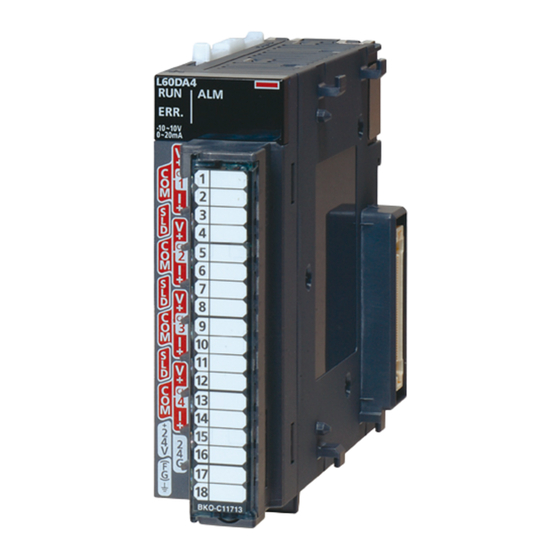
Mitsubishi MELSEC L Series User Manual
Programmable controller, digital-analog converter module
Hide thumbs
Also See for MELSEC L Series:
- User manual (440 pages) ,
- Programming manual (1296 pages) ,
- Reference manual (532 pages)
Table of Contents
Advertisement
Quick Links
Advertisement
Table of Contents
Troubleshooting
















Need help?
Do you have a question about the MELSEC L Series and is the answer not in the manual?
Questions and answers